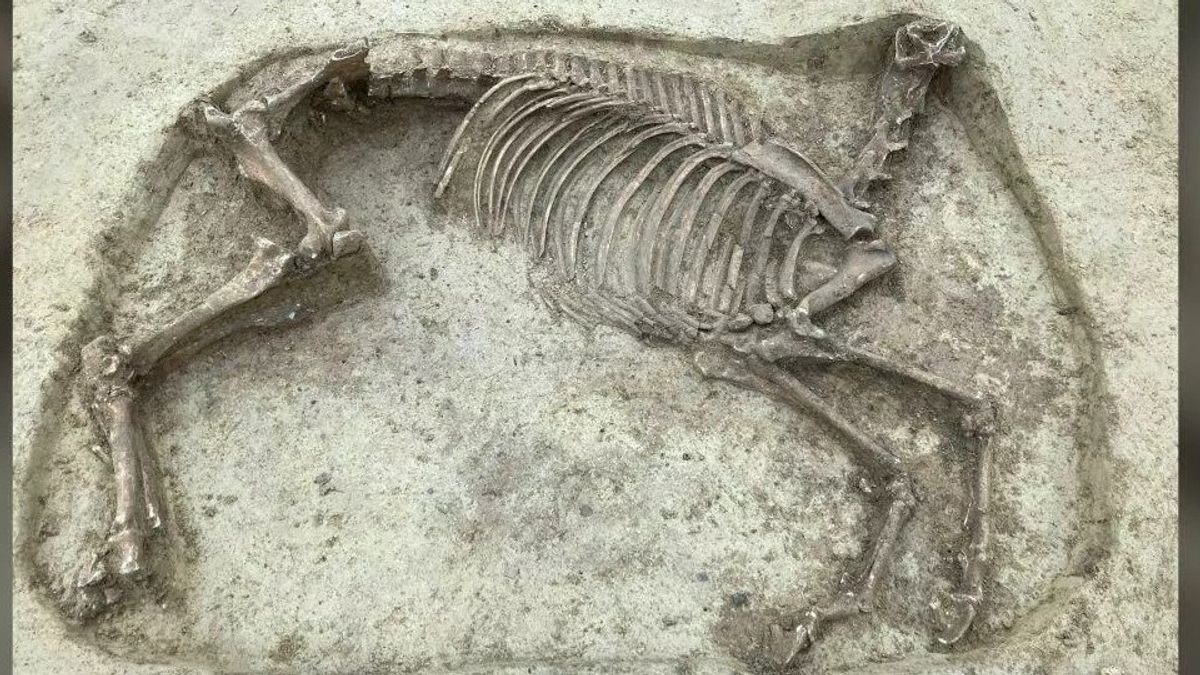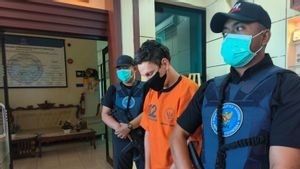JAKARTA - The mysterious skeleton of a headless horse has been found buried with its rider in a medieval cemetery in the southern German city of Knittlingen.
According to archaeologists from the State Office of the Stuttgart Regional Council for the Preservation of Monuments and ArchaeoBW, the remains are estimated to be around 1,400 years old.
At this time, the region was ruled by the Merovingian dynasty, a Frankish family that ruled from 450–751 AD, uniting most of what is now France and central Europe.
Experts aren't sure why the horse was beheaded, but think it was likely part of the man's burial ceremony, with the horse's body buried.
Among his other items were a straight, double-edged sword known as a 'spatha' and a spear. The location of the horse's head, meanwhile, remains unknown.
Excavations at the site were led by archaeologist Folke Damminger of the State Office of the Stuttgart Regional Council for the Preservation of Monuments.
The medieval cemetery, a little west of the center of Knittlingen, was first discovered in the 1920s during construction work for the narrow railway line which was eventually cancelled.
As experts explain, the man found buried beside his horse was most likely in the Merovingian dynasty.
"He stands in the chain of command with the Merovingian kings above him, which means he is obligated to participate in the king's campaigns," Dr. Damminger explained to Live Science.
"As a member of the local elite, he is most likely the head of a peasant household consisting of his family and servants."
However, the man himself may not be directly involved in farming practices, but will have workers to take care of it.
Dr. Damminger also said the man's elaborate burial on his horse was likely to be arranged by his family to reaffirm his and their social status.
"One of the functions of this ceremony is the 'staging' of the deceased in his former status and wealth as his successor claims to maintain this status," the archaeologist explained.
The elite is not the only individual from this period whose remains have been exhumed by researchers from burial sites.
In fact, the team reported they had inspected a total of 110 graves, some of which were simple burials, while others used wooden coffins and more elaborate wooden burial chambers.
Many men, they said, were buried alongside weapons including arrowheads, spears, shields, and swords, while others were buried with luxury items, such as a woman found beside a gold brooch.
Other grave items included jewelery such as amulets, arm rings, belt hangers, earrings, pearl necklaces and robe pins, along with bronze bowls, combs, knives and ceramic vessels that analysis says once contained food for the dead.
"Although fragmented as a result of ancient robberies, the findings provide an indication of the social position of the dead," said Dr. Damminger.
Most of the graves were found in orderly rows, while members of the local elite were buried 'out of sequence' in circular ditches, the team added.
According to archaeologists, these burials are more lavish than burials from the late 7th century.
"It is not known whether this was due to reduced prosperity or a different staging of local elite funerals," said Dr. Damminger to meinKA.
Apart from medieval discoveries, the site also contains several Neolithic ceramic fragments dating from around 5000–4500 BC.
"As would be expected given Knittlingen's location in a lush old residential landscape, the investigation also revealed individual prehistoric finds, namely the Stone Age," explains Dr. Damminger.
With their initial investigation completed, the researchers are now continuing to study the remains of the headless horse and its rider, with the aim of learning how old the man was, his state of health and the possible cause of death.
Along with this, the team will continue to excavate and examine other burials from the cemetery, with remains and other artifacts transported to Rastatt for analysis.
The English, Chinese, Japanese, Arabic, and French versions are automatically generated by the AI. So there may still be inaccuracies in translating, please always see Indonesian as our main language. (system supported by DigitalSiber.id)













